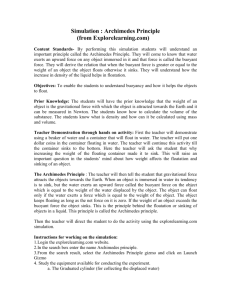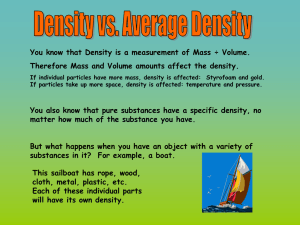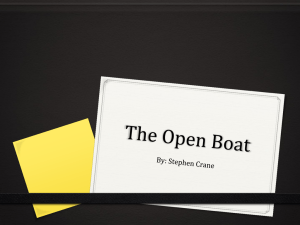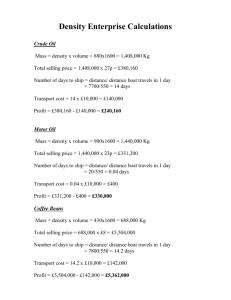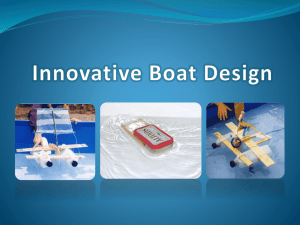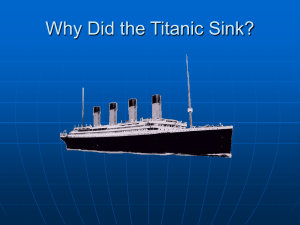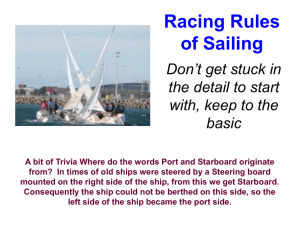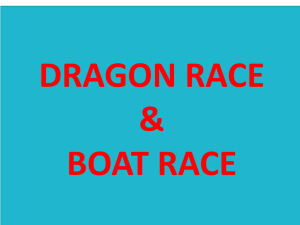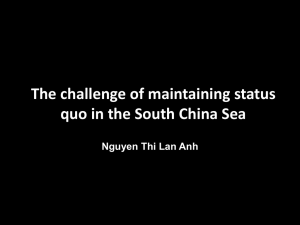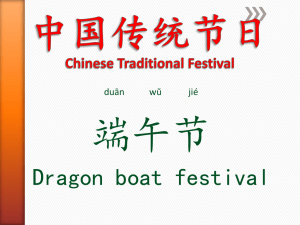Archimedes Principle PPT
advertisement
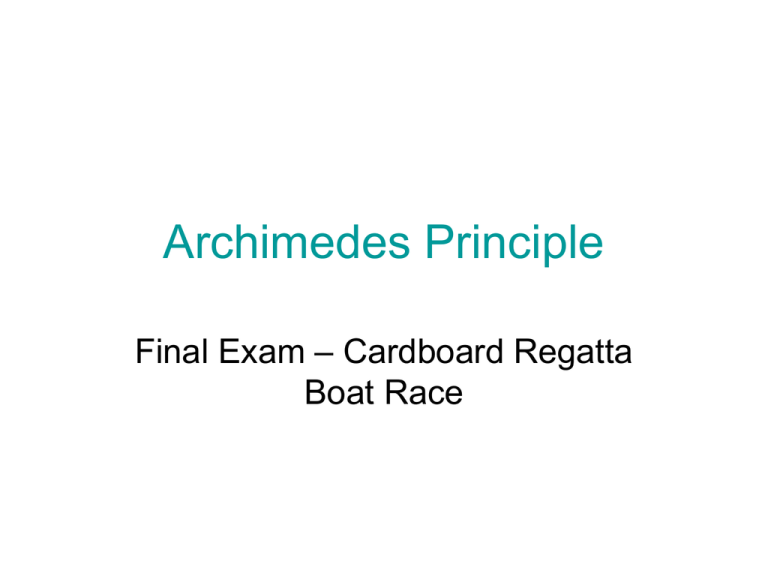
Archimedes Principle Final Exam – Cardboard Regatta Boat Race • CARDBOARD REGATTA – BOAT RACE Presented By: Al Mugno Northern Highlands Regional High School Archimedes Principle • Archimedes' principle is named after Archimedes of Syracuse, who first discovered this law in 212 B.C • “An object partially or wholly immersed in a liquid is buoyed up by a force equal to the weight of the liquid displaced by the object” • Any fluid applied a buoyant force to an object this is partially or completely immersed in it: the magnitude of the buoyant force equals the weight of the fluid that the object displaces” Archimedes Principle Archimedes Principle - Why ships float!! Archimedes Principle Buoyancy The “upward” force is acting on an object due to the displaced fluid Archimedes Principle - Buoyancy How can this Principle be applied to creating and solving the Cardboard Regatta Boat Challenge? Videos • http://science.howstuffworks.com/6540mythbusters-lets-talk-buoyancy-video.htm • http://www.youtube.com/watch?v=U1YVZMifMM Types of Boat Hulls Types Of Boat Hulls (Flat, Round, Multi, Vee) Some Terms Associated with Ship Floatation • • • • • • Here are some of the important terms associated with ship floatation and an accompanying diagram to clarify the same. Draft – this refers to the depth from the water surface till the bottom-most section of the ship immersed in water Freeboard – this refers to the remaining height of the ship above the water level TPC – Tonnes per centimeter refers to the amount of mass which must be added or removed from a ship so that its draft changes by one centimeter. WPA – Water plane area of a ship is the area of the ship which the ship occupies when immersed in water at the water plane Reserve Buoyancy – a ship is meant to load cargo hence when the ship is empty it must have ample space to take additional weights of cargo etc without sinking and this is known as reserve buoyancy which is defined as percentage of total volume Read more: http://www.brighthub.com/engineering/marine/articles/19774.aspx#ixzz1Joc dzRNa PAPER BOAT BUOYANCY CHALLENGE PROBLEM Design a paper cardstock boat that will float in the water with the following criteria: - The boat maximum size will be 4” wide and 8” long and 3” deep (side of the boat) are the dimensions The boat must be designed to have buoyancy in water for the longest period of time while holding 12 weights (#8 3” carriage bolts, 4 washers and 2 carriag bolt nuts) in addition to the boat materials Once the boat sinks ( this is any portion of the boat travelling below the waters line/surface) the time stops. You will place the weights in the boat and then put the boat into the tub of water for testing TIME: You will have two class periods to design this boat and test it – due by the end of next class Friday(testing will take place the last 20 minutes of the class) PEOPLE: You will work in groups of 2; the group of three will produce two boats of which one will be tested. PAPER BOAT BUOYANCY CHALLENGE – cont. • Materials: • • • • sheet of cardstock supplied scissors, x-acto knife kit. Pencil or pen to mark measurements only 12” of supplied tape Ruler - for measuring only not to be used in the boat materials GRADING: Two Grades: First: 30 seconds is the minimum passing time =100A+ For every second less than this required minimum time you will lose 5 pts. (3 seconds/12 seconds = 85 B – lose 15 points) Second: The overall time/weight graduated scale based upon the weights and times. Greatest weight & time = 100A+ , second 96 A, …….. It will count as a project grade of 50% Q & A??
